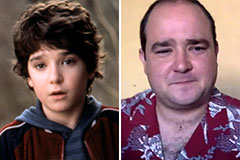Top Exercises for Squint Eye (Strabismus) Correction
Misaligned eye condition refers to a situation where both eyes do not focus in the same direction.
While medical correction are often used, eye workouts may help restore proper coordination.
Here are daily habits that may realign visual focus over time.
Pencil Focus Drill
Hold a pencil at arm’s length.
Fix your gaze on the end and slowly draw it closer to your face, keeping it in focus.
Then move it away. Repeat 10–15 times.
???? Strengthens focus muscles.
Occlusion Strengthening
Cover the dominant eye.
Encourage activity using the non-dominant eye.
Do this for 1–2 hours a day.
???? Simple yet powerful.
Depth Perception Enhancer
Use a 5-foot string with 3–4 beads.
Focus on each bead by moving your eyes without head movement.
???? Reduces double vision.
Size-Focus Coordination Drill
Draw 3 different-sized barrels on a card.
Start with the largest and move to the smallest.
???? Improves tracking ability.
5. Object Tracking
Pick a hand, pen, or ball.
Track its motion in horizontal, circular, and vertical.
???? Stimulates neural tracking.
6. Focus Shifting
Look at a close object (e.g., a book).
Then shift gaze to a distant item (e.g., a window or tree).
???? Improves visual adaptation.
Infinity Symbol Movement
Imagine a figure 8 in front of you.
Use only your eyes to trace it in all directions.
???? Engages multiple eye muscles.
Do These Exercises Work?
Research indicates that daily eye exercises can train muscle control.
A 2020 study found 60% of participants had improved squint with focused training.
Children generally respond faster due to more flexible eye systems.
Are website Exercises Enough?
These routines are helpful but not a standalone cure. Combining them with therapy or lenses is essential.
How to Maximize Eye Exercise Effectiveness
Stay consistent.
Alternate between drills.
Begin with shorter sessions.
Reduce screen strain.
Conclusion
Squint eye exercises are non-invasive methods to support better alignment and coordination.
With dedication, you may see gradual correction.
Train your eyes like muscles—no pain, just gains.
 Ralph Macchio Then & Now!
Ralph Macchio Then & Now! Bradley Pierce Then & Now!
Bradley Pierce Then & Now! Batista Then & Now!
Batista Then & Now! Catherine Bach Then & Now!
Catherine Bach Then & Now! Nadia Bjorlin Then & Now!
Nadia Bjorlin Then & Now!